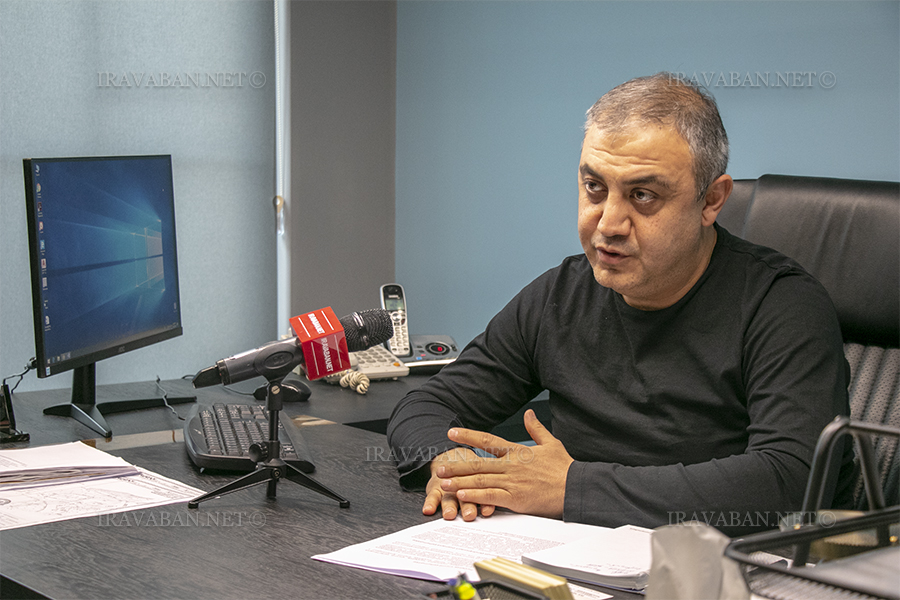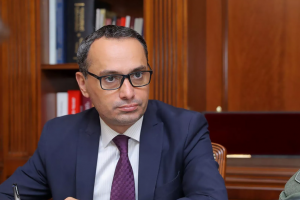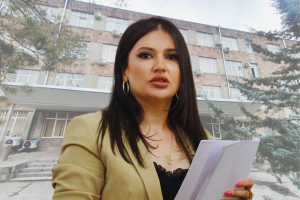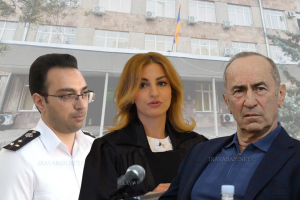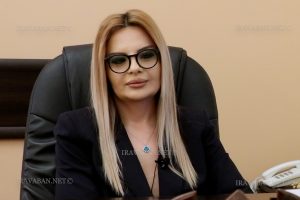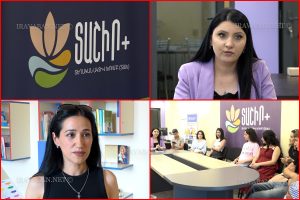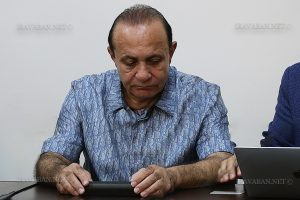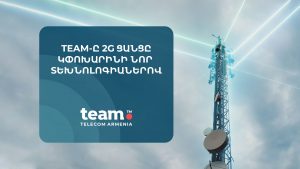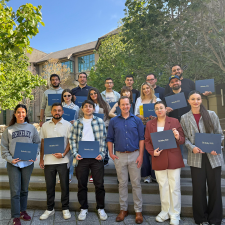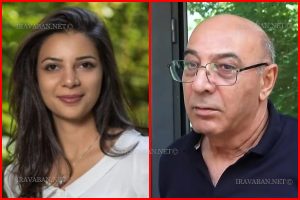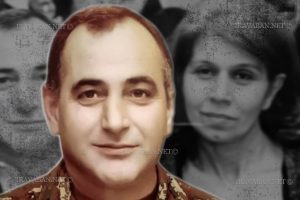The preliminary hearing in the case of illegally acquired property confiscation from former SRC Deputy Chairman Armen Sakapetyan continued at the Anti-Corruption Civil Court, presided over by Judge Lili Drmeyan.
The Prosecutor General’s Office demands to confiscate the following in favor of the Republic of Armenia from Armen Sakapetyan and affiliated persons:
- 0.42% of the apartment at 15-2 G. Sundukyan St., Arabkir, Yerevan
- 1.75% of apartment 11, building 3, Sasna Tsrer Street, Davtashen, Yerevan
- 15.44% of parking spaces 8 and 53 of building 88, 58/20 K. Ulnetsu Street, Kanaker-Zeytun, Yerevan
- 18.58% of apartment 29, building 58/20, K. Ulnetsu Street, Kanaker-Zeytun, Yerevan
- 16.44% of real estate at 14 Olimpavan Street, Tsaghkadzor, Kotayk
- 4.72% of HONDA ENP vehicle
- 0.01% of LAND ROVER DEFENDER SE 3.0 vehicle
- 10.33% of current market value of real estate at 21/2 Tumanyan, Center, Yerevan
- 37.7% of current market value of land plot in Vanand community, Armavir
- 20.5% of current market value of land plot in Artamet community, Armavir
- 0.07% of “ESTATE INVESTMENT AND DEVELOPMENT” LLC
- Apartment 29, building 58/20, K. Ulnetsu Street, Kanaker-Zeytun, Yerevan
To confiscate from Armen Sakapetyan in favor of the Republic of Armenia:
- 59,608,302 AMD as remaining illegal funds
- 246,204,682 AMD, which is not justified by legal income, has illegal origin, has been transferred to a bona fide acquirer or cannot be identified and confiscated (…)
According to Iravaban.net, during this session, the respondent side continued to direct questions to the plaintiff regarding the presented evidence.
Armen Harutyunyan, representative of respondent Armen Sakapetyan, asked Karlen Apinyan, economist of the PG’s Department for Confiscation of Illegally Acquired Property, about the tabulated data. For example, at the end of 2006, his client’s alleged illegal income (cash) amount changed from 500,000 to 406,325 drams, asking how this change occurred and on what basis the reduction process took place.
Apinyan said that during that year there were account replenishments and cash withdrawals, and as a result of these transactions, the amount decreased, with some parts being reflected in deposits and other payments.
It was noted that during this period, the account was replenished with 4,818,000 drams, of which 4,599,000 was considered legal cash, while 219,033 drams was considered illegal non-cash according to the calculation methodology.
The parties also discussed the 500,000 drams belonging to Armen Sakapetyan in 2006, which was viewed as illegal, with 81,000 of the amount accepted as non-cash expenses, leaving a total of 410,000 drams.
Armen Sakapetyan inquired why the sum of these two should not equal 500,000 drams, and additionally, if there was an illegal 410,000 drams, whether a different percentage threshold was applied to next year’s expenses or not.
Karlen Apinyan responded: “We don’t consider expenses as illegal on a percentage basis, but rather based on which account the expense was made from at the time of the transaction and whether there were sufficient legal funds in that account, and if not, what portion was illegal.”
According to him, there is also a currency difference issue in this case. In 2006, there were dollar deposits, and the authorized body sees the account replenishment process. If an account is replenished with amount x, they use the bank’s specified exchange rate at that moment with the current monetary expression indicator.
“We don’t have an issue with cash; we note it in monetary expression at that exact rate at that moment. That is, if you withdraw cash or make some non-cash USD transaction, we convert that transaction to AMD at that day’s rate and perform the calculation in drams at that rate.
The problem arises with non-cash transactions when the movement has occurred in foreign currency, but we have a negative or positive difference in monetary expression,” he said.
He noted that for cash withdrawals, they determined the amount using the exchange rate set by the bank. A discussion took place regarding transactions made during this period, deposit investments, currencies, and their calculations.
Respondent Armen Sakapetyan replied to the plaintiff that the calculation made has its negative consequences: “The currency calculation wasn’t carried out based on objective data, and in this case in 2006, if we look, my foreign currency negative difference or loss amounts to about 300,000 drams, and as a result of being short 300,000 drams, for example, you’ve recognized part of the Sundukyan Street apartment as illegal, some small percentage.”
Nelli Ter-Torosyan, prosecutor of the Department for Confiscation of Illegally Acquired Property, said that the authorized body has an obligation to determine the correlations between known income and expenses, and the method, way, and formula for determining these have been granted by the legislator: “You had a deposit in foreign currency, you invested it, then repaid it, the authorized body considered it in monetary expression at the time of repayment, this is an approach issue that may not correspond to objective reality, but the authorized body has no other data about when USD was converted to AMD until the next property acquisition.
…If you have data that doesn’t correspond to the logic formed by the authorized body, if you have evidence, cite those documents, justify with them that the currency exchange took place on such and such date, the authorized body will consider it calculated at that date’s exchange rate, convert it to drams and apply it to the corresponding property acquisition.”
Armen Sakapetyan’s next question concerned the 620,000 AMD cash received from his mother in 2021, asking what this amount was. The plaintiff side indicated they would review and answer this question additionally. Sakapetyan also emphasized that the question is being asked because his mother had no income other than the amount given by his sister and pension.
The next question concerned the sale of 50% share in “ESTATE INVESTMENT AND DEVELOPMENT” LLC, of which 25% was sold to Artak Andreasyan and 25% to Karen Galstyan, with no data available about the latter transaction. The plaintiff side also stated they would review this additionally.
Sakapetyan’s other question was related to the activities carried out on 70 hectares of land in Mrgashat community of Armavir region. The acquisition of the territory was considered legal, and agricultural activity was carried out – alfalfa cultivation. He inquired which facts would be considered sufficient by the plaintiff side to present the income received from this activity.
Nelli Ter-Torosyan said that the community leader has an obligation to maintain records, and appropriate certification should be presented regarding the performance of activities.
Lawyer Armen Harutyunyan said that at this stage, the main questions were exhausted, and the respondent side will ask other questions after taking a position on the discussed issues, for which he requested 1 month.
The court granted the motion, and the next court session will take place on March 19.
Mariam Shahnazaryan

